Education > QUESTIONS & ANSWERS > FIDSAP TRAUMA QUIZ – UPDATED QUESTIONS AND ANSWERS GRADED A (All)
FIDSAP TRAUMA QUIZ – UPDATED QUESTIONS AND ANSWERS GRADED A
Document Content and Description Below
1. An alert 18 year old female is found trapped in her car after a single motor vehicle crash. The air bag deployed and she denies any head or neck pain, but she complains of hip and left leg pain. Wh... en she is finally extricated from the car, her vital signs begin to collapse. What shock is she transitioning from? A. neurogenic shock to hypovolemic shock. B. decompensated shock to compensated shock. C. compensated shock to decompensated shock. D. decompensated shock to hypovolemic shock. 2. Which of the following mechanism of injuries would NOT be significant for an adult? A. Death in the same passenger compartment. B. Fall from more than ten feet. C. Ejection from vehicle. D. Altered mental status. 3. A 20 year old female has burns on her chest, abdomen, and on the anterior side of her right arm. What percentage of body is burned? A. 22.5% B. 27% C. 40.5% D. 18% 4. Before placing an unconscious 6 year old on a long backboard, what should you do? A. Place padding directly underneath the head. B. Place padding underneath the shoulders. C. Contact the parents for consent. D. Asses vital signs. 5. What best defines shock? A. Lack of adequate perfusion to the tissues. B. Hemorrhage exceeding 50% of total blood volume. C. Deficiency of vascular tone due to hemorrhage. D. Inadequate cerebral blood flow. 6. Your patient's vehicle was struck by another motorist from behind. What should you do? A. Perform a head-to-toe examination. B. Stabilize the cervical spine. C. Administer high-flow oxygen. D. Apply a half-spine immobilization device. 7. An 18 year old female was hit and has 4 teeth pushed into the upper gums of her jaw. She complains of severe pain and discomfort. Bleeding is minimal and vital signs are BP 120/90, R 16, P 88, SpO2 96%. What should you do? A. Administer aspirin for pain. B. Insert an oropharyngeal airway to maintain patency. C. Apply oxygen by nonrebreather mask at 15 lpm. D. Monitor her bleeding and ensure a patent airway. 8. An injury produced by wounding forces of compression and change of speed, both of which can disrupt tissue is defined as. A. Third degree Trauma. B. Penetrating trauma. C. Blunt trauma. D. Cavitation. 9. A 34 year old female has been bleeding vaginally for two hours. She is anxious, alert, and oriented. Her skin is cool, pale, and diaphoretic. Vital signs are BP 116/70, P 118, R 20. What should you suspect? A. Hypotensive shock B. Hypertensive shock C. Decompensated shock D. Compensated shock 10. What is a contraindication of a traction splint? A. Signs of hypoperfusion B. Swelling or deformity to the thigh C. Pelvic fracture D. Potential spinal injury 11. A 56 year old male involved in a car accident complains of chest and abdominal pain. Pulses differ by 10 mmHg systolic bilaterally and lung sounds are muffled. To which artery should you suspect a rupture? A. Subclavian artery B. Carotid artery C. Iliac artery D. Radial artery Scenario: 12. A 32 year old female attempted to commit suicide by taking sleeping pills and cutting her wrists. She has dark red blood oozing from the wrist lacerations. Vital signs are BP 90/52, P 130 and weak, R 18. What type of bleeding and shock is she experiencing? A. Venous bleeding with hypovolemic shock. B. Capillary bleeding with cardiogenic shock. C. Arterial bleeding with hypovolemic shock. D. Venous bleeding with neurogenic shock. 13. Unequal pupils are a result of pressure on which structure? A. Occulomotor nerve B. Central medulla C. Trochlear membrane D. Vagus nerve 14. A 41 year old male has been injured in an explosion at a chemical laboratory. He has a ruptured tympanic membranes and sinus injuries. At what phase of the blast did the patient sustain the sinus injuries? A. Primary B. Ultimate C. Tertiary D. Secondary 15. When protecting the cervical spine of a suspected trauma patient, what should you do? A. Place gentile traction to straighten the cervical spine. B. Hold the cervical spine in the position found. C. Place a rigid collar on the neck prior to continuing with the rest of the assessment. D. Hold the neck in a neutral, in-line position. 16. What is a mechanism of obstructive shock? A. Myocardial infarction B. Spinal cord injury C. Acute fluid loss D. Tension pneumothorax 17. Which of the following is the first sign of shock that usually appears in patients? A. Changes in vital signs B. Pale, cool, and clammy skin C. Altered mental status D. Nausea and vomiting 18. Which of the following describes bruising or discoloration behind the ears as a result of a fractured skull? A. Babinski's B. Silver fork C. Cushing's D. Battle's 19. What is the correct technique when splinting a suspected finger fracture? A. Apply a straight, flat, and rigid splint to the finger. B. Place an arm board under the wrist and wrap with curlex. C. Tape the fractured finger to a neighboring finger only. D. Immobilize the hand and finger in a pillow and apply ice. 20. After initial treatments of an arterial bleed in the left forearm are unsuccessful. What should you do? A. Apply a tourniquet. B. Lower the extremity. C. Apply pressure to the radial artery. D. Apply pressure to the subclavian artery. 21. A 12 year old male has suffered a blast injury. What phase would projectiles have caused injury to the patient? A. Secondary B. Primary C. Tertiary D. Quaternary 22. When the vascular container enlarges without proportional increase in the fluid volume, what type of shock should you suspect? A. Decompensated B. Hypovolemic C. Cardiogenic D. Distributive 23. A 26 year old female complains of chest pain after a motor vehicle accident. Auscultation of lung sounds reveals distant heart tones. Vital signs are BP 160/70, P 56, R 22 and she has distended neck veins. What should you suspect? A. Hemothorax B. Abdominal aortic aneurysm C. Congestive heart failure D. Pericardial tamponade 24. A 34 year old male involved in a motorcycle crash presents with tachycardia, hypotension and muffled heart tones. What should you suspect? A. Pericardial tamponade B. Hemopneumothorax C. Traumatic asphyxia D. Tension pneumothorax 25. What organ is located in the upper right quadrant? A. Spleen B. Liver C. Kidney D. Pancreas 26. An alert, ambulatory, 26 year old female admits to laying her motorcycle down at 25 mph to avoid a crash. She has extreme pain to her left side where you note severe abrasions. She denies any neck or back pain. What should you do? A. C-collar and immobilize her fully in the standing position. B. Oxygen and transport in a semi-sitting position of comfort. C. C-collar and transport her on his left side. D. Sterile dressings and treat her pain with ice. CONTINUED..............DOWNLOAD FOR BEST SCORES [Show More]
Last updated: 1 year ago
Preview 1 out of 36 pages

Reviews( 0 )
Document information
Connected school, study & course
About the document
Uploaded On
Oct 21, 2022
Number of pages
36
Written in
Additional information
This document has been written for:
Uploaded
Oct 21, 2022
Downloads
0
Views
41




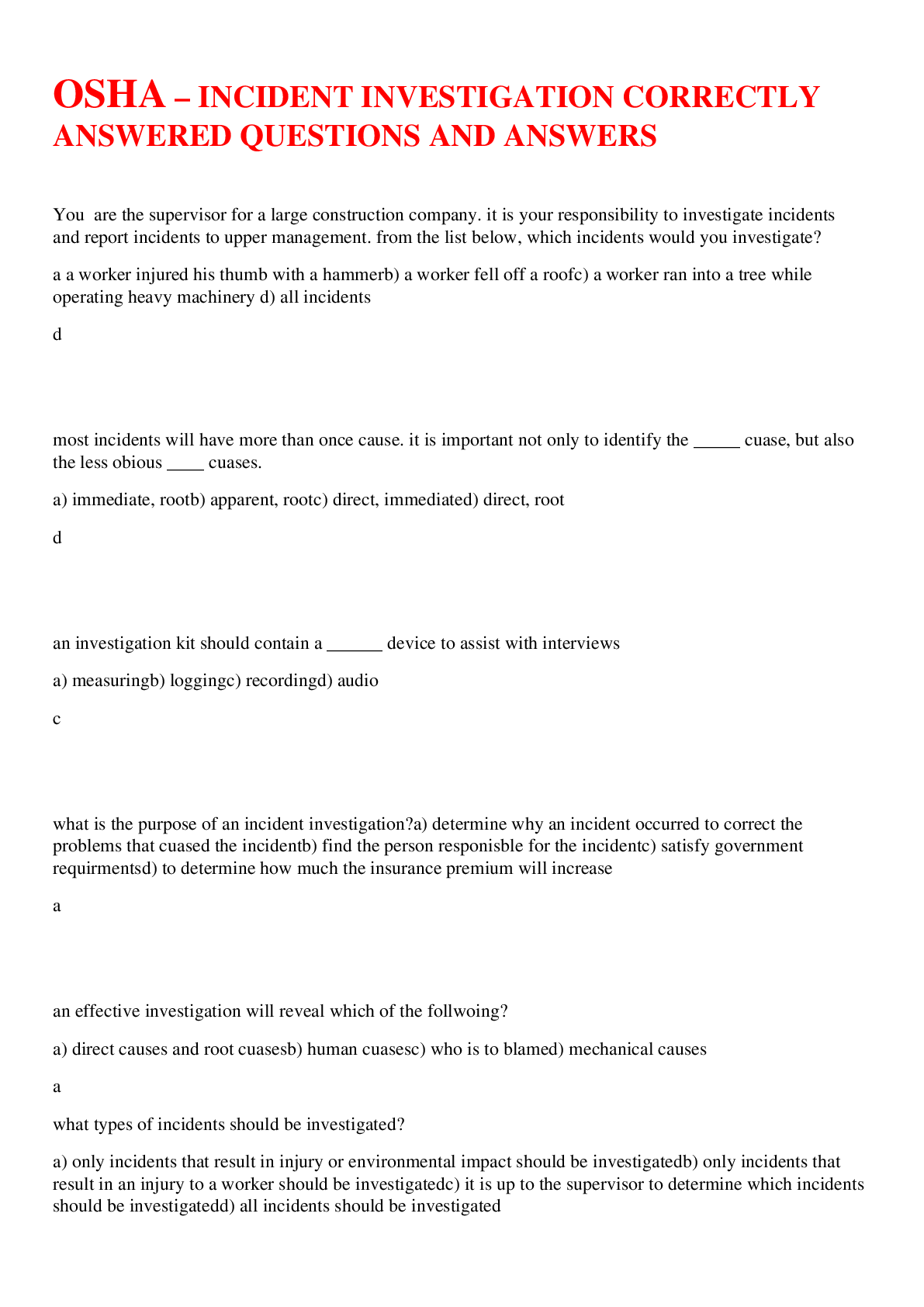


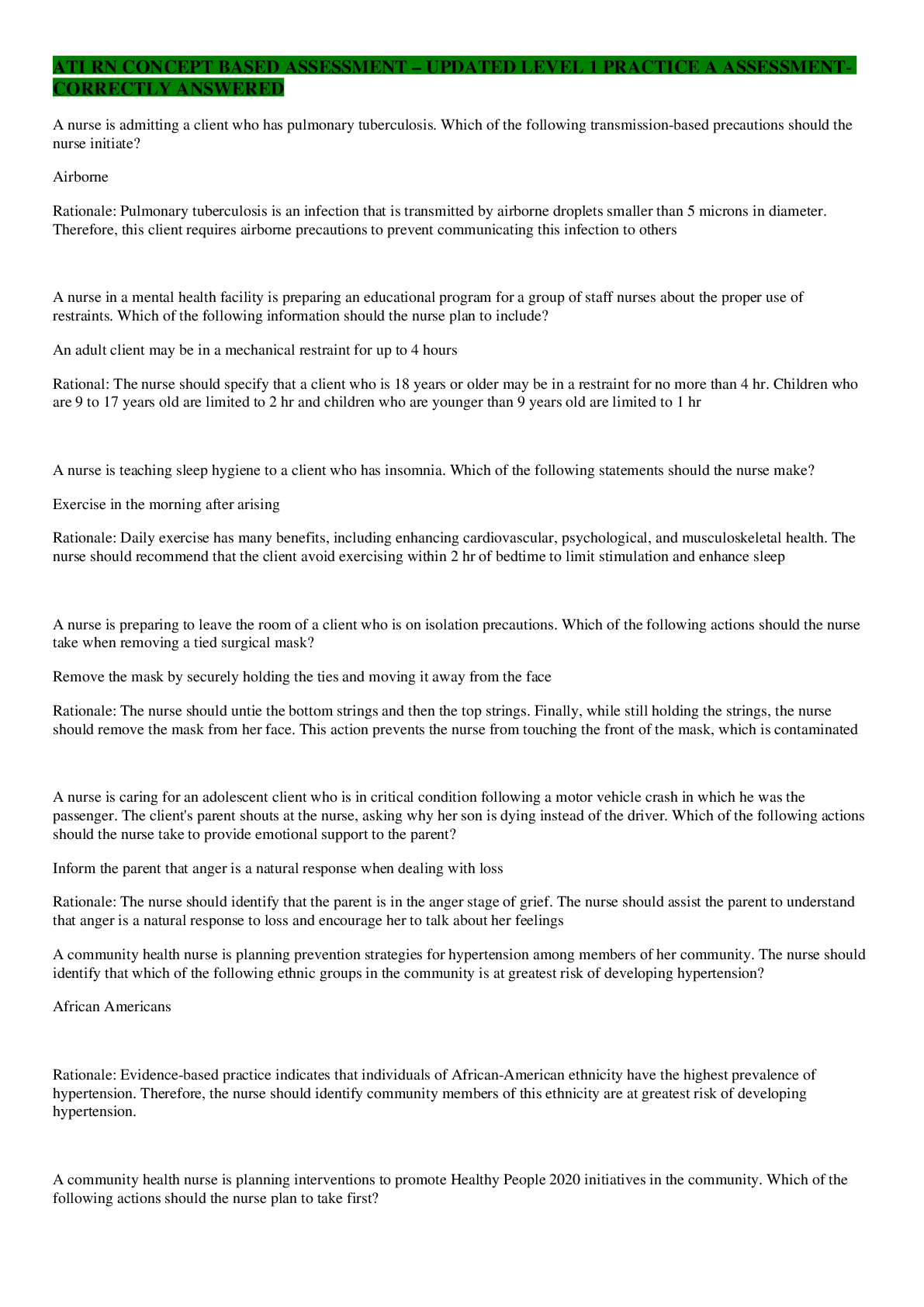


.png)
.png)
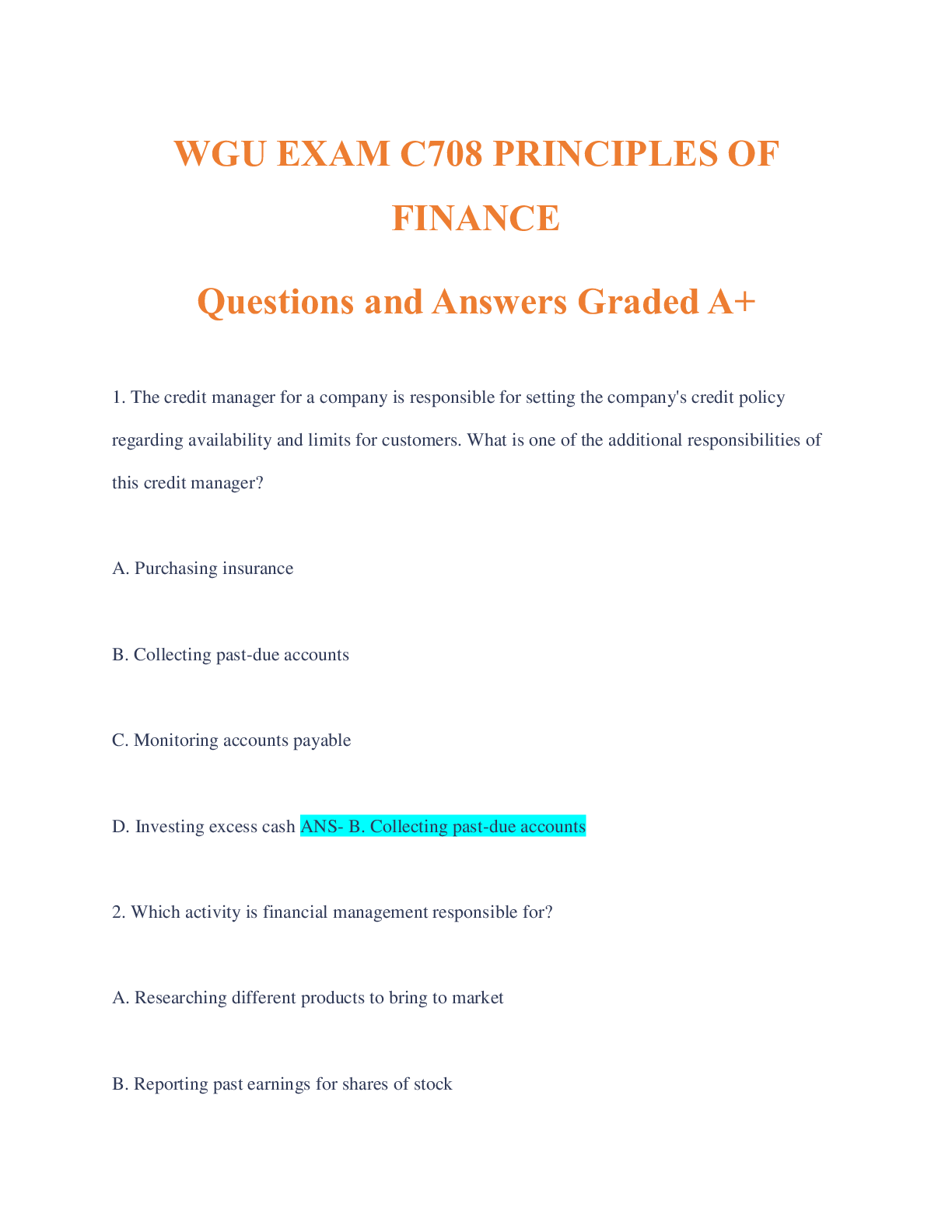
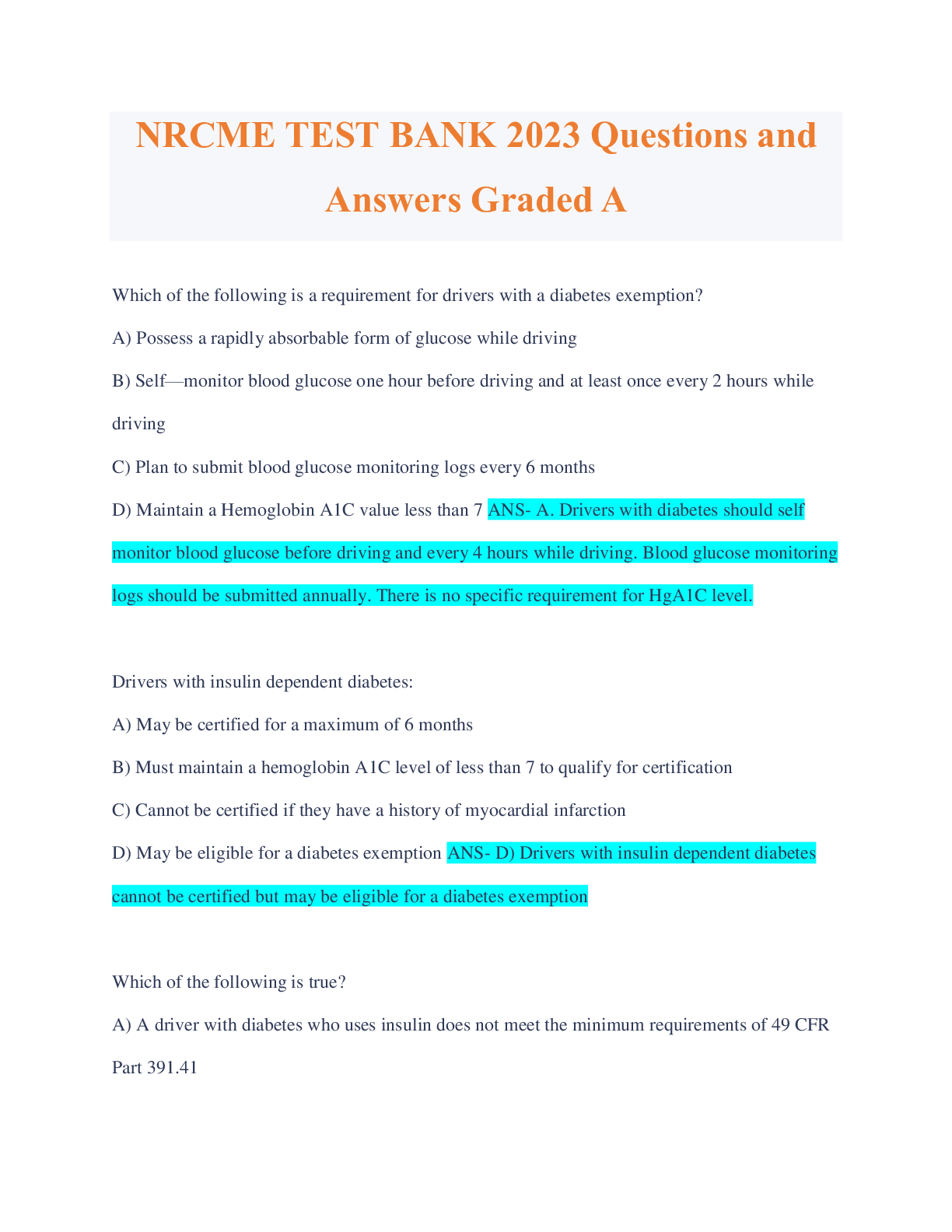
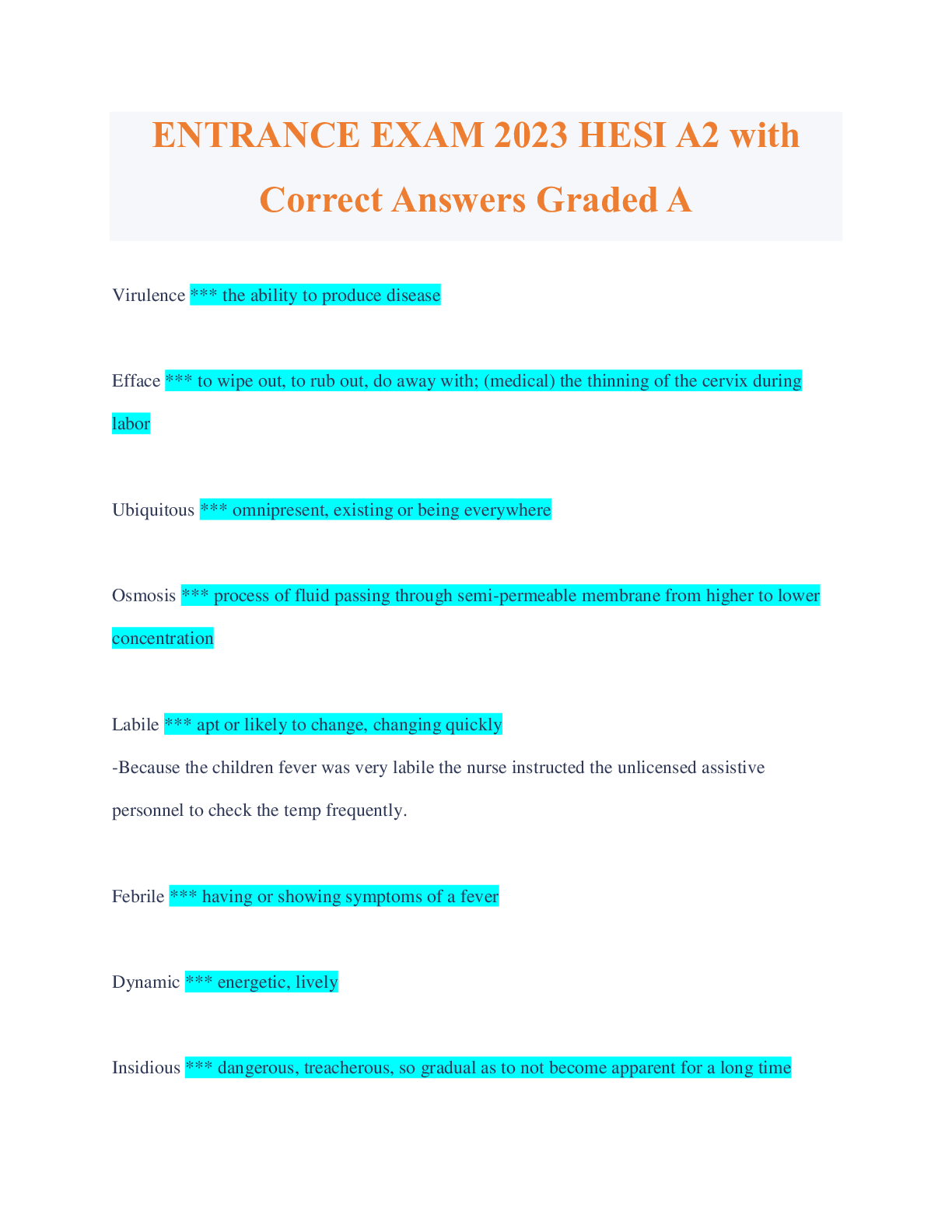

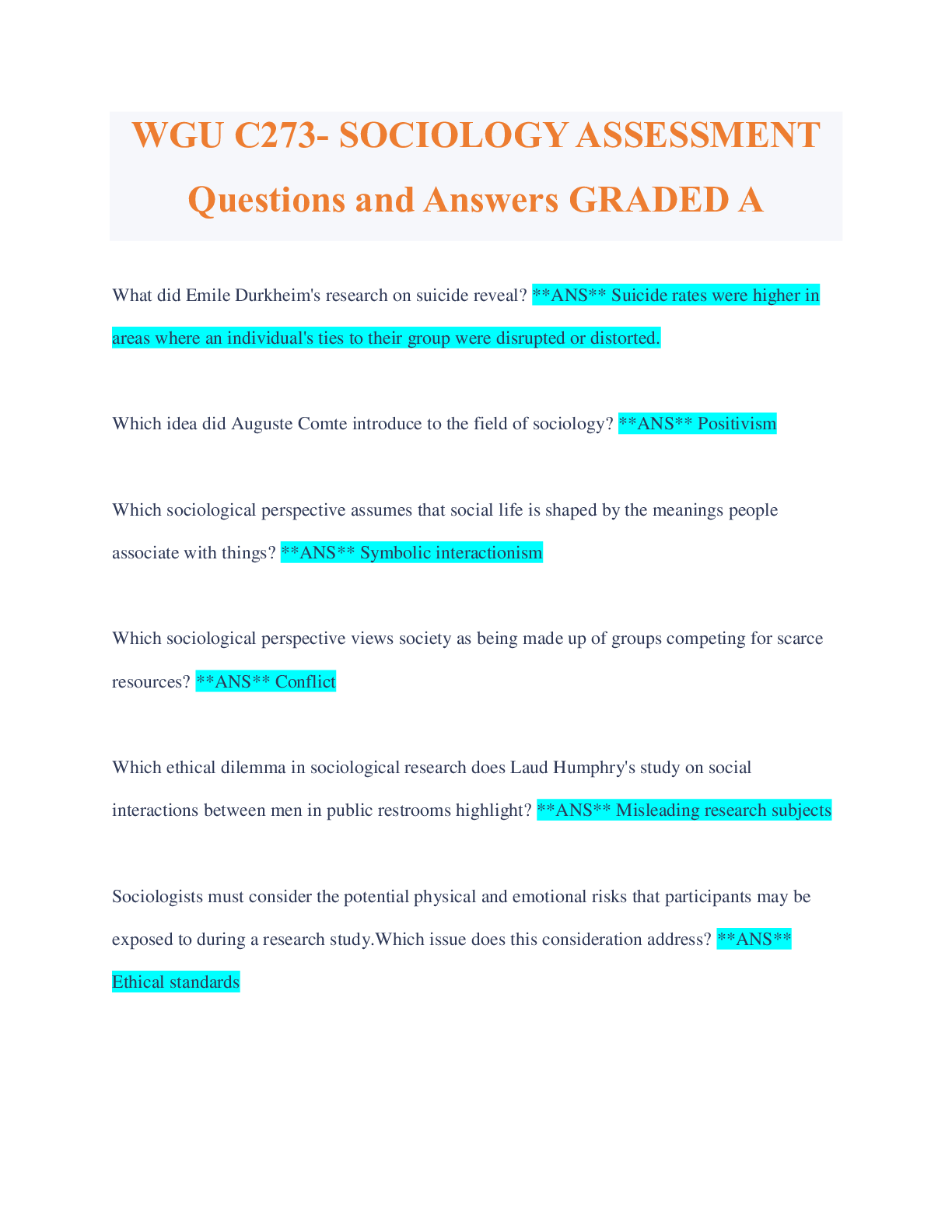
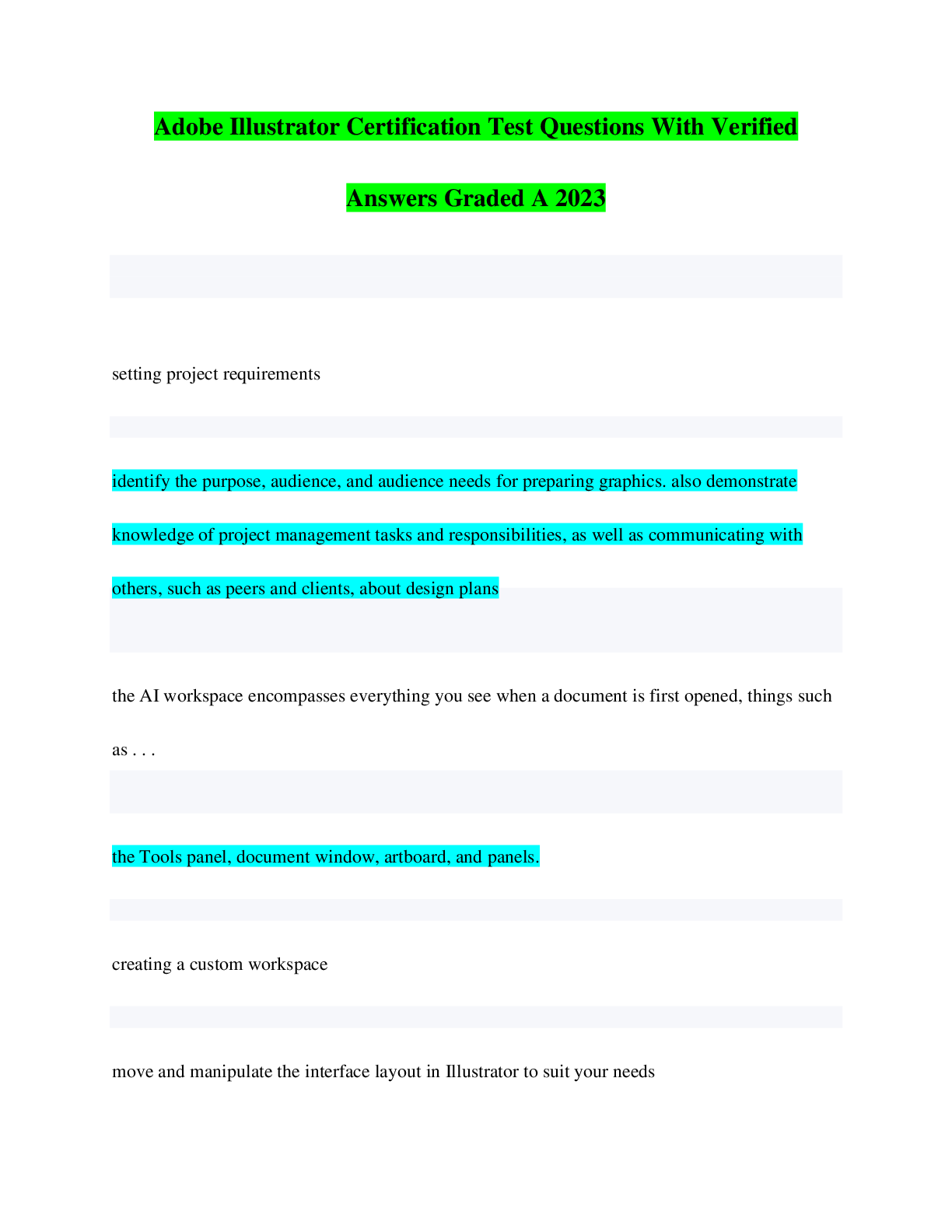
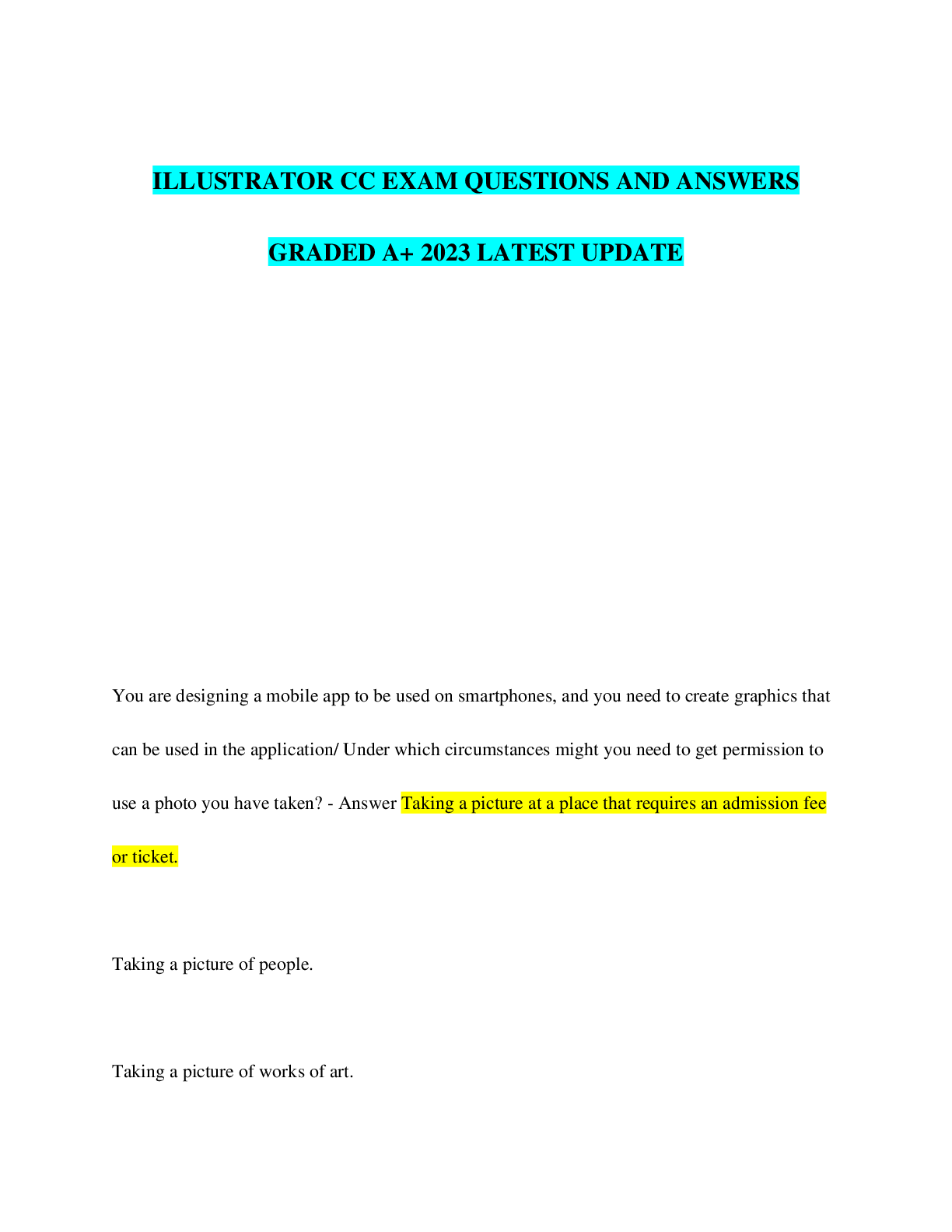
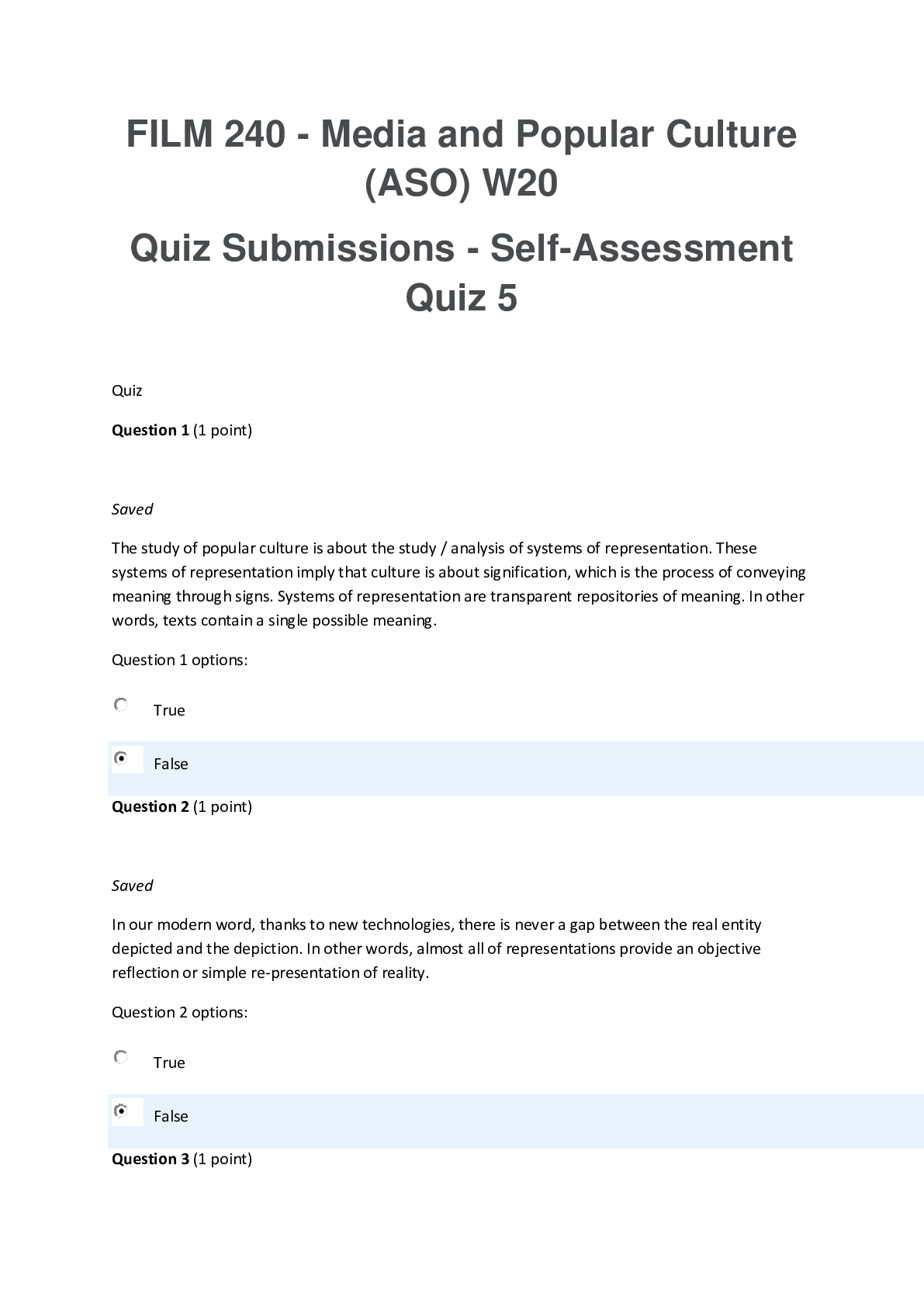
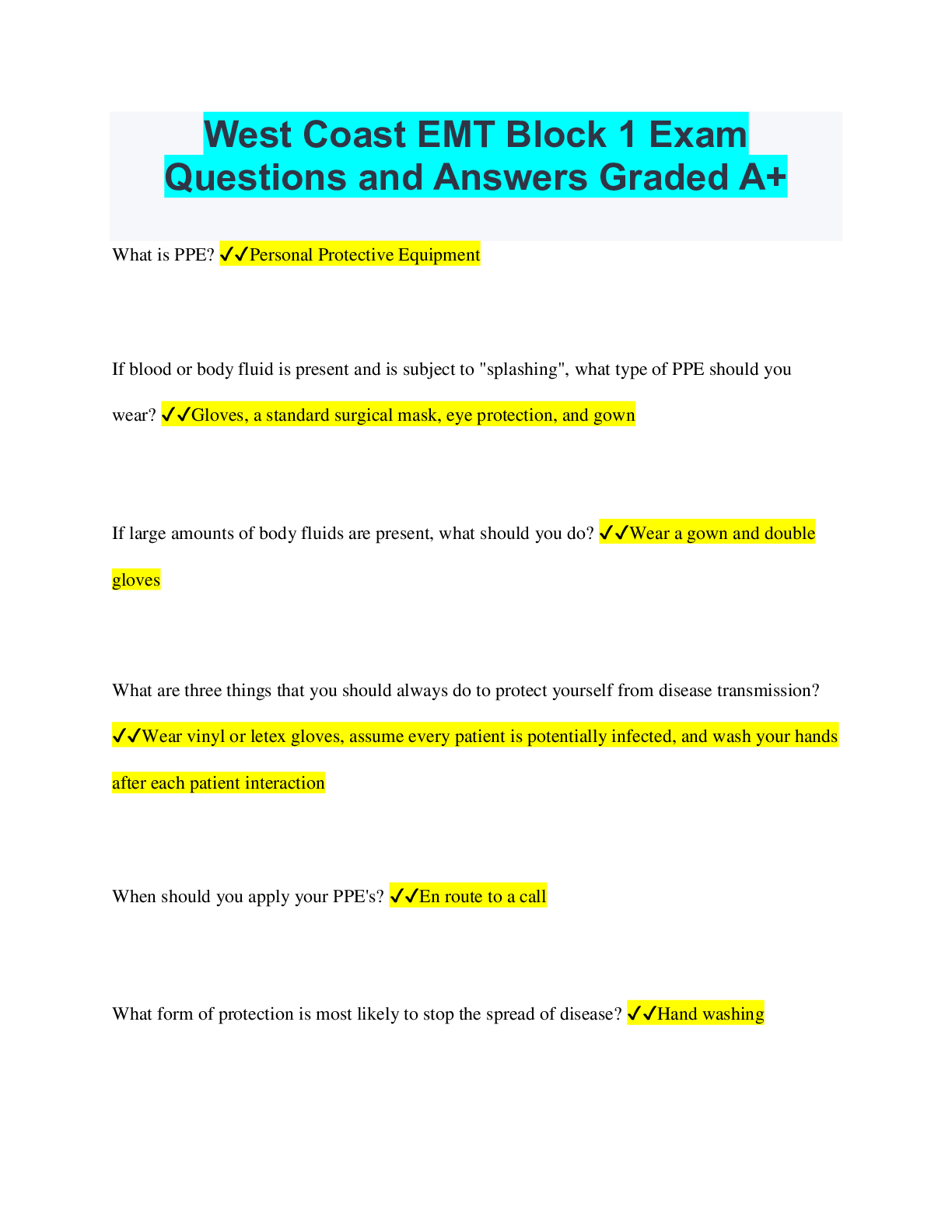
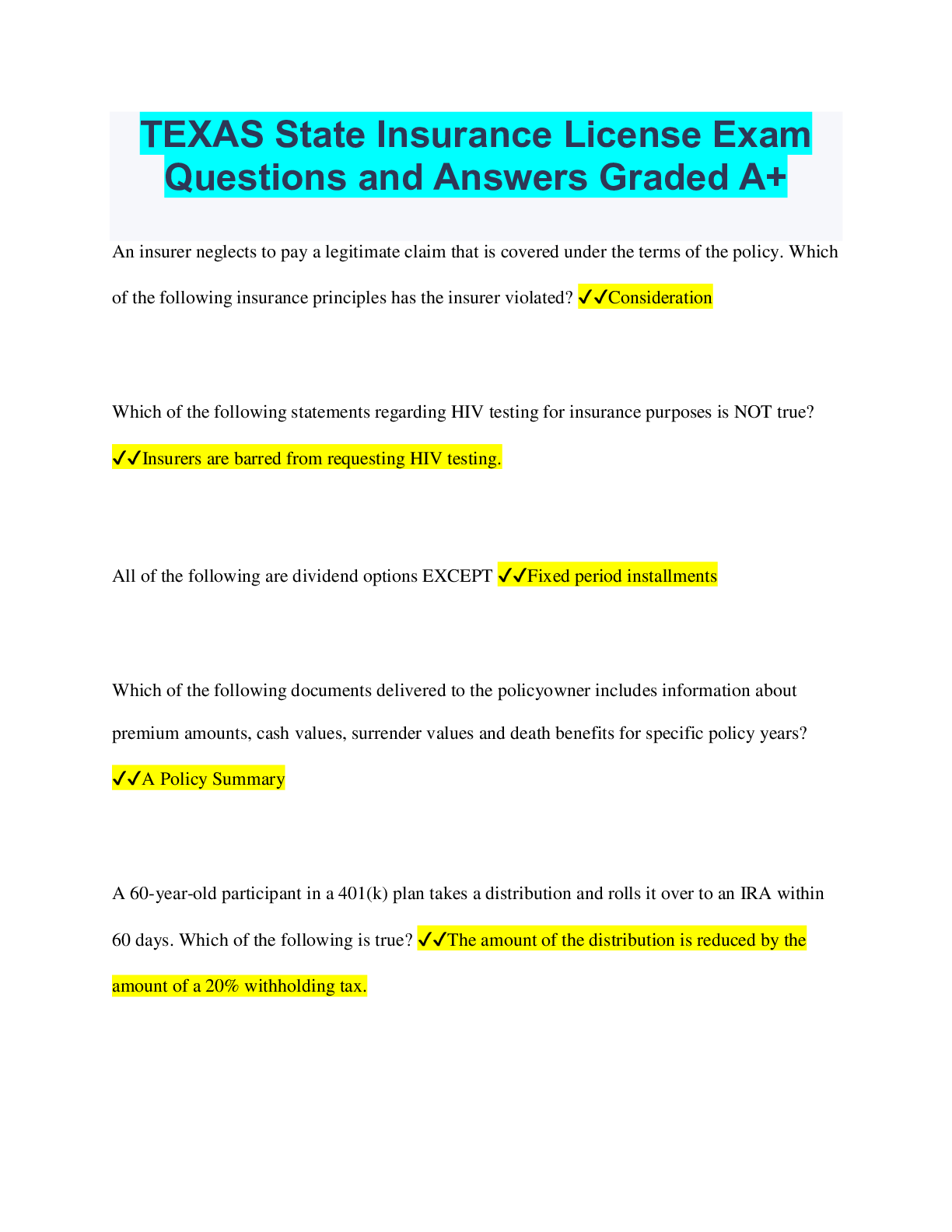
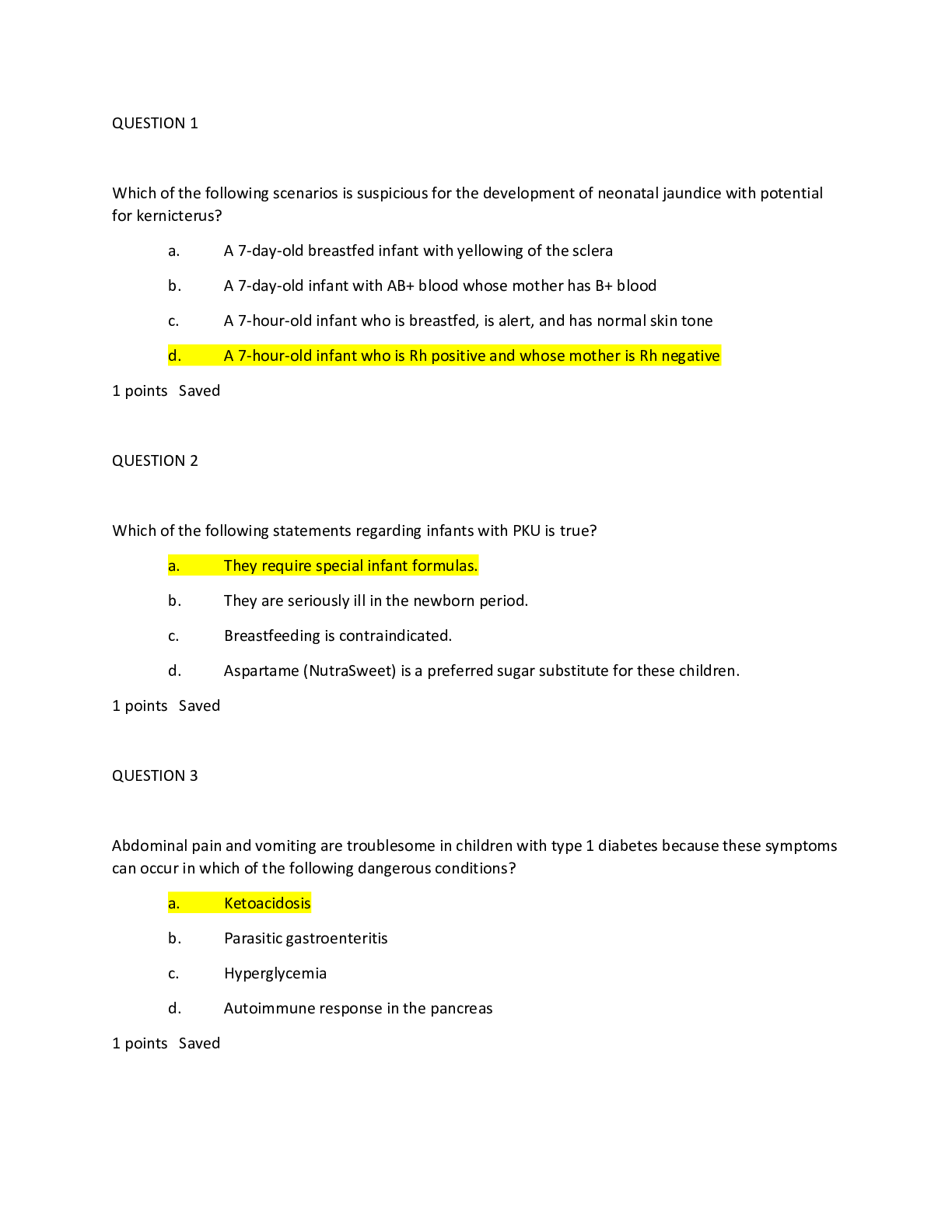

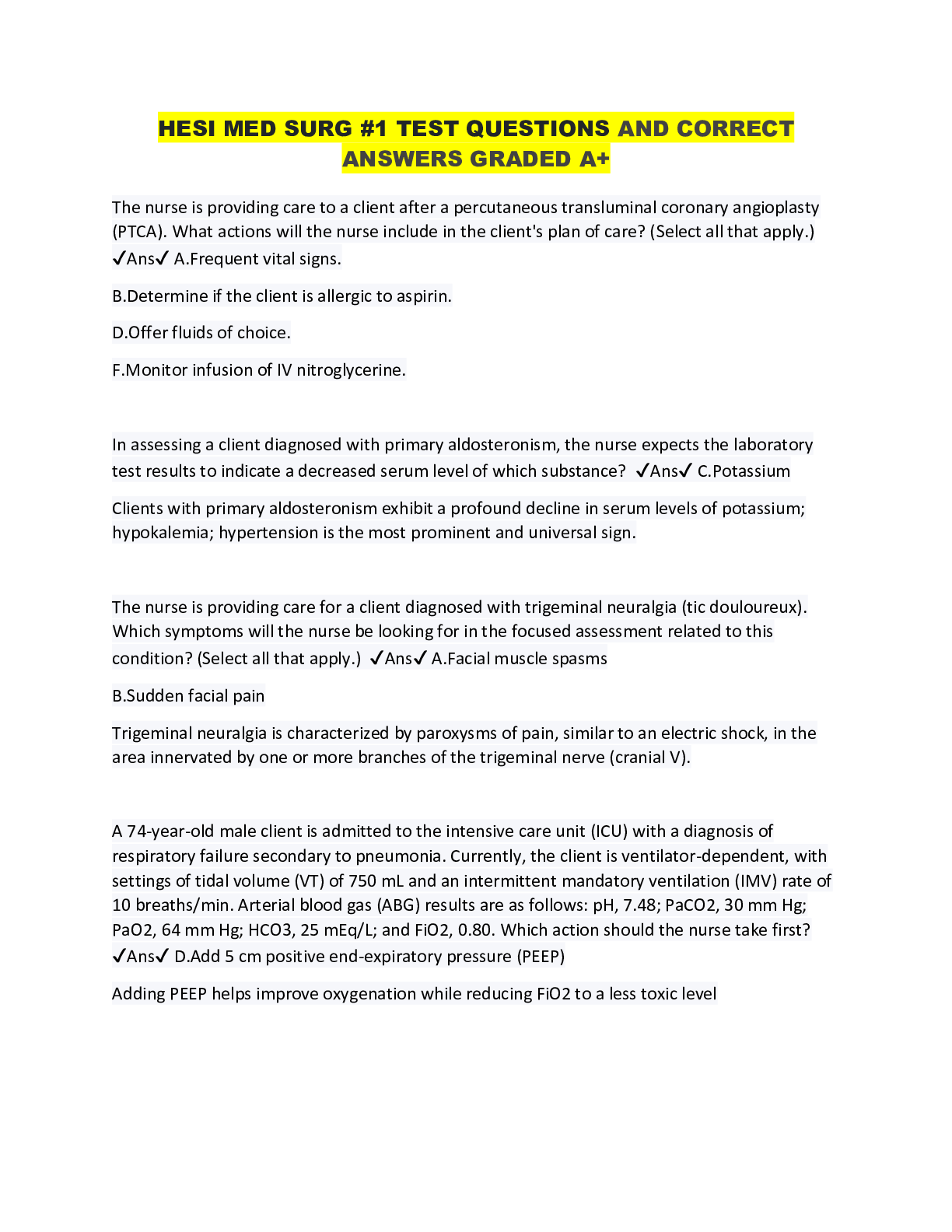
 Exam Preparation With Correct Answers Graded A+-1.png)

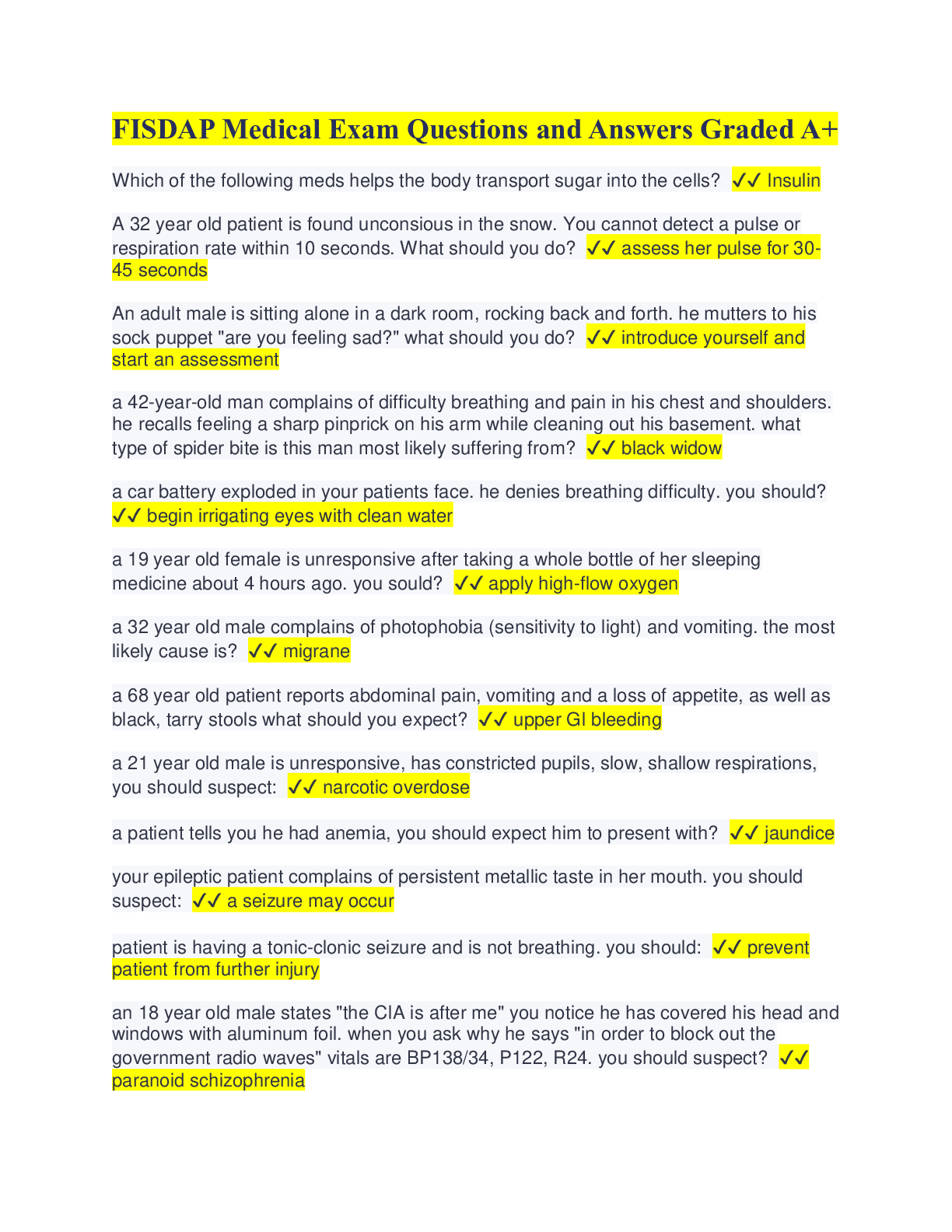
.png)

